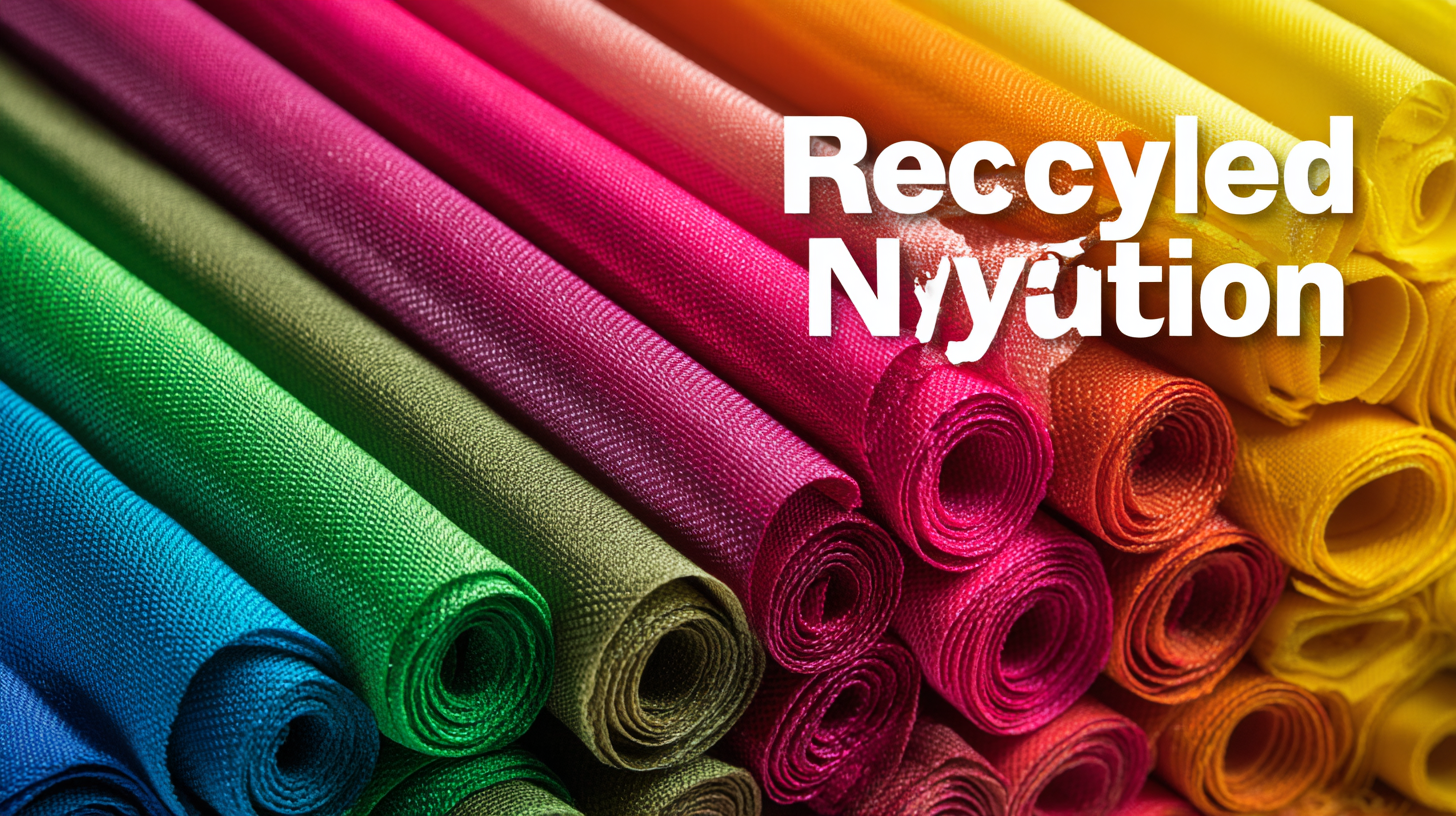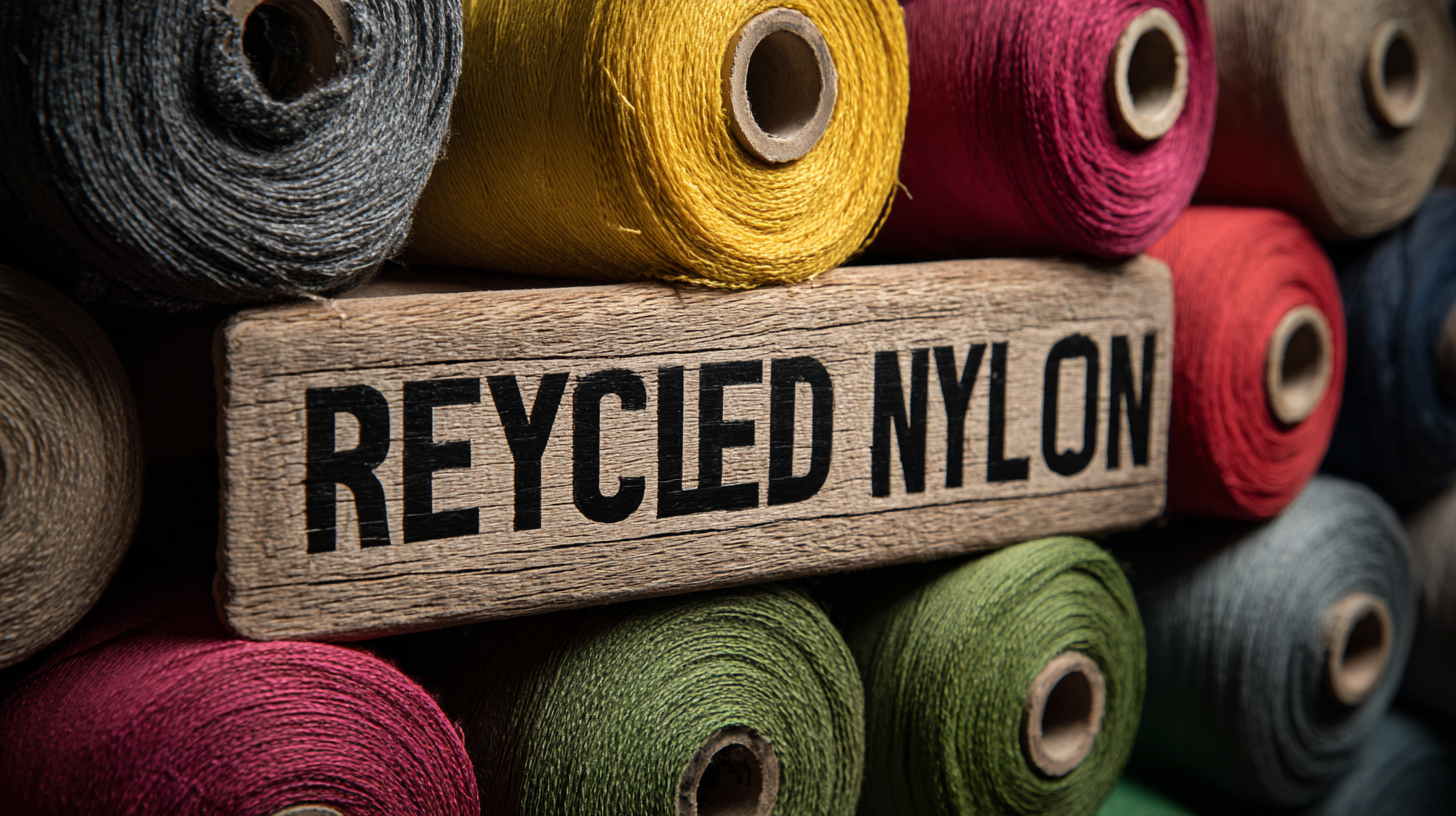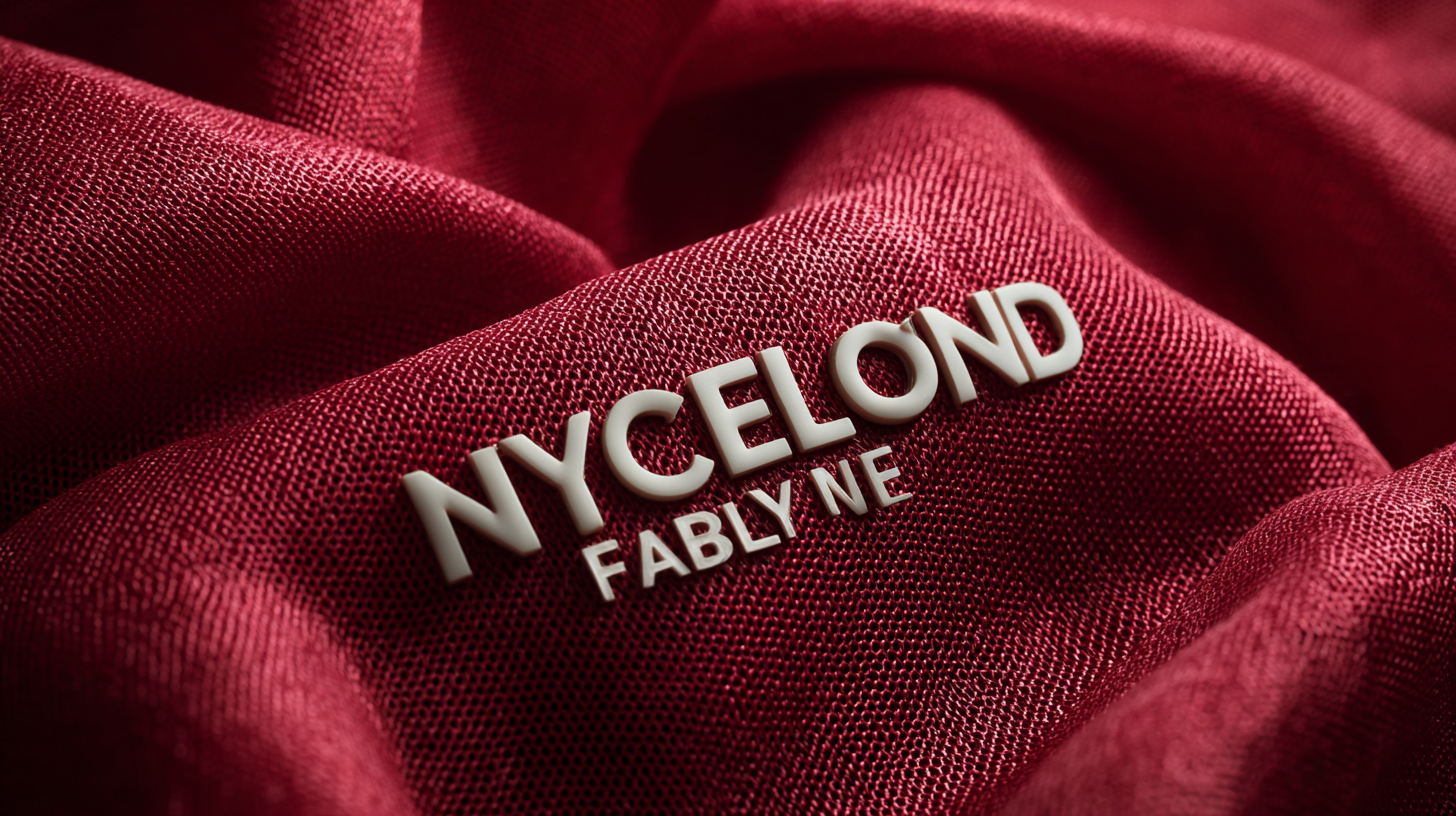As sustainability continues to take center stage in the fashion industry, the demand for eco-friendly materials is surging. Among these, Recycled Nylon Fabric has emerged as a leading choice, offering a sustainable alternative to virgin nylon. According to a report by the Global Textile Industry, the market for recycled textiles is expected to reach $25 billion by 2025, driven by consumer preferences for environmentally responsible products. Furthermore, the use of recycled materials can reduce energy consumption by up to 80% compared to traditional nylon production. This shift not only supports environmental goals but also aligns with the growing consumer awareness of the impacts of their choices.

In this blog post, we will explore seven essential tips for selecting the best Recycled Nylon Fabric for your next project, highlighting key considerations in terms of after-sales support and repair costs, ensuring you make an informed and impactful decision.
Recycled nylon fabric is making waves in the sustainable fashion industry, offering an eco-friendly alternative to traditional materials. When considering materials for your next project, it's essential to understand the benefits that recycled nylon brings to the table. First and foremost, using recycled nylon helps reduce waste and minimizes the environmental impact associated with the production of new nylon. This sustainable approach not only conserves resources but also decreases the carbon footprint of the final product.
Moreover, recycled nylon boasts impressive durability and versatility, making it suitable for various applications, from outdoor gear to fashion items. Its inherent strength means that products made from recycled nylon can withstand wear and tear, ensuring longevity. Additionally, this fabric maintains the desirable qualities of traditional nylon, such as water resistance and elasticity, while contributing to a circular economy. By opting for recycled nylon, you not only enhance the sustainable credentials of your project but also inspire others to make conscious choices in their material selections.
When selecting recycled nylon materials for your next project, it is crucial to consider several key factors to ensure you make the best choice. Firstly, assess the source of the recycled nylon. Nylon can be recycled from various sources, including waste fabrics, fishing nets, and industrial scraps. Understanding the origin of the material will not only inform you about its eco-friendliness but also its performance characteristics, as different sources might offer varying levels of durability and quality.
Another essential factor is the fabric construction. Look for details such as denier, weave pattern, and finish, as these attributes significantly influence the fabric's texture, strength, and water resistance. For example, a higher denier may provide greater durability, while specific weave patterns can enhance breathability or flexibility. Additionally, it’s important to consider the environmental certifications associated with the recycled nylon, such as Global Recycled Standard (GRS) or OEKO-TEX certification. These certifications assure you that the fabric meets responsible production standards and passes various safety checks, contributing to the sustainability goals of your project.

When embarking on a project that calls for recycled nylon fabric, understanding the various types available in the market is crucial. Recycled nylon, primarily derived from post-consumer waste such as fishing nets and industrial plastic, comes in several forms. For instance, the Global Recycling Foundation reports that recycled nylon can reduce carbon emissions by up to 80% compared to virgin nylon production. This significant reduction is achieved because recycled materials require less energy during processing, promoting a more sustainable manufacturing cycle.
Among the recycled nylon options, Nylon 6, a frequently recycled synthetic polymer, stands out due to its versatility and durability. It is commonly used in apparel, swimwear, and outdoor gear. Another option is Nylon 66, which, while less frequently recycled, offers enhanced strength and heat resistance, making it ideal for high-performance applications. A recent market analysis reveals that the demand for recycled nylon is projected to grow by 12% annually over the next five years, driven by an increasing consumer preference for sustainable products. Understanding these nuances will help you make an informed choice for your next project, ensuring both performance and environmental responsibility.

When selecting recycled nylon fabric for your next project, evaluating its quality and durability is paramount. High-quality recycled nylon not only contributes to sustainability but also ensures that your final product can withstand wear and tear. According to a report from the Textile Exchange, recycled nylon has a significantly lower environmental impact compared to virgin nylon, using 90% less water and generating 80% fewer carbon emissions during production. This data highlights the importance of opting for materials that not only meet aesthetic needs but also environmental ones.
One essential tip for assessing recycled nylon is to look for certifications such as Global Recycle Standard (GRS) or OEKO-TEX Standard 100. These certifications indicate that the fabric adheres to rigorous standards for ecological sustainability and toxicological safety. Additionally, consider the denier of the fabric—this measurement indicates the thickness and strength. Fabrics with a denier of 210 to 420 are generally more durable, suitable for products that require longevity, such as outdoor gear or bags.
Another crucial aspect is the fabric's weave and finish. A tight weave tends to enhance durability while providing resistance to abrasion. Moreover, considering water repellency and UV resistance features can further improve the fabric's performance, especially for outdoor applications. By prioritizing these factors, you can ensure that your recycled nylon fabric not only respects the environment but also meets the demands of your project.
This chart illustrates key quality and durability metrics for selecting recycled nylon fabric. The properties assessed include tensile strength, breaking elongation, UV resistance, water resistance, and abrasion resistance. Understanding these factors can assist designers and manufacturers in making informed choices for sustainable fabric applications.
When sourcing recycled nylon for your next project, finding reliable suppliers and brands is crucial to ensuring quality and sustainability. As the fashion industry shifts towards eco-friendly materials, many innovators are focusing on the benefits of recycled nylon, which presents a smarter alternative to virgin nylon. This shift not only addresses environmental concerns but also enhances brand reputation in a market that increasingly values sustainability.
To discover trustworthy suppliers, consider looking for companies that prioritize transparent sourcing practices and demonstrate a commitment to ethical production. Direct relationships between material suppliers and retailers are becoming more common, facilitating better access to high-quality recycled materials. Engaging with brands that highlight their sustainability efforts can also guide you toward making informed decisions, ensuring that your project not only meets aesthetic goals but also contributes positively to the environment. The growing demand for recycled nylon emphasizes the importance of supporting those who are leading the charge toward a more sustainable fashion industry.
